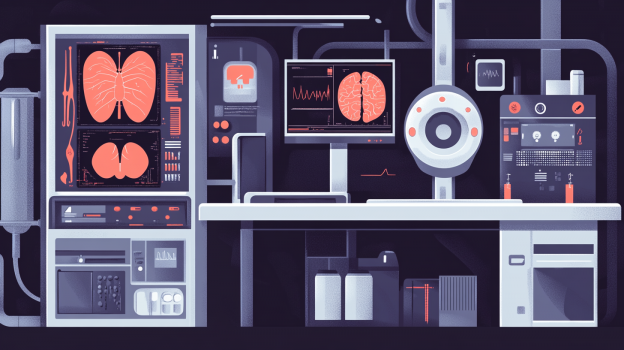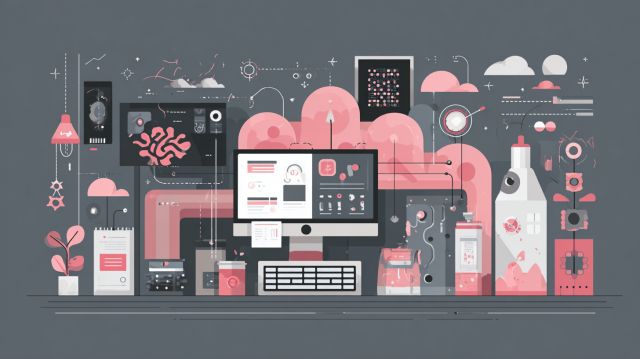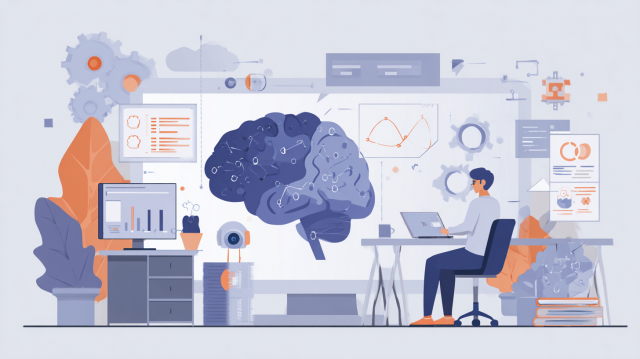
>>Past Published Blogs (Partial)
Challenges and Solutions in Medical AI Annotation: Utilizing Outsourcing Vendors with Expertise
- Table of Contents
1. AI Advancement in the Medical Field
Recently, AI has remarkably advanced into areas that are surprisingly close to us. The medical field is no exception, and although it is limited, the introduction of AI into medical settings has begun. While the use of medical AI is expected to address various challenges faced by healthcare, such as reducing the burden on doctors, developing new drugs, and correcting regional disparities in healthcare, it also brings new challenges, including reliability, legal frameworks, and a shortage of personnel with medical expertise involved in AI development. Here, I would like to introduce the merits and demerits of medical AI.
2. Benefits of Utilizing Medical AI
There are various benefits to utilizing AI in the medical field, including generally improved operational efficiency, enhanced diagnostic accuracy, prevention of medical errors and human mistakes, reduced burden on physicians, and correction of regional disparities. Here, let's take a closer look at each of these benefits.
Streamlining Office Operations and Cost Reduction
Medical AI, unlike humans, can perform image analysis and extract information from medical records in an astonishingly short time, tasks that were traditionally only possible for humans. Additionally, if AI automatically handles patient billing tasks, it can improve the efficiency of administrative work. As a result, both labor hours and personnel costs can be reduced.
Improvement of Diagnostic Accuracy
AI image recognition excels at finding patterns and classifying and analyzing vast amounts of information. In medical AI that utilizes this capability, there is a high potential for improving diagnostic accuracy by analyzing patient examination, diagnosis, and treatment data. Analyzing vast amounts of information one by one takes time for doctors, and improving diagnostic accuracy also requires the experience of the physician. However, AI can support doctors' diagnoses without taking time, reducing dependence on the physician's experience and skills, and increasing the likelihood of achieving highly accurate diagnoses.
Reference Blog: 3 Examples of Image Diagnosis Using Medical AI
Reducing the Burden on Physicians
In addition to the chronic shortage of personnel, recent advancements in medical imaging equipment such as CT and MRI have made it possible to obtain a large number of images and information in a much shorter imaging time. While the progress in technology is highly welcome, it is said that the increase in the number of images and the volume of information has further increased the burden on the physicians and technicians who interpret the images. By utilizing medical AI, we can achieve automation of image interpretation and report generation. Additionally, by replacing simple tasks and routine operations performed by healthcare professionals with AI, we can create an environment where doctors and healthcare workers can focus on core tasks such as diagnosis.
Prevention of Medical Malpractice
Improving diagnostic accuracy through AI and reducing the burden on doctors ultimately leads to the prevention of human errors by the physicians and healthcare professionals who make the final decisions, as well as the prevention of medical malpractice. As mentioned in the previous section, the shortage of healthcare workers is chronic and is expected to continue in the future. This is true in any industry, but as people become overwhelmed with work and the time available for diagnosis and decision-making decreases, their judgment becomes dull, and there is less room for multifaceted consideration. Regulations on the maximum working hours for doctors outside of regular hours and on holidays have already begun. The introduction of AI is expected to streamline on-site operations and reduce human burdens, thereby preventing medical errors.
Correction of Regional Disparities (Support for Telemedicine)
In rural areas, there are few medical facilities and doctors, making it difficult to receive appropriate treatment, which raises concerns about regional disparities. With AI enabling the analysis of case data and diagnostic support, even in areas with a small number of local doctors, it becomes possible to provide cutting-edge medical care that was previously only available in urban areas. Additionally, if the burden of medical tasks is reduced, even a small medical system in rural areas can handle a greater number of consultations and diagnoses, helping to correct regional disparities.
3. Disadvantages of Utilizing Medical AI
The use of medical AI in healthcare settings offers various benefits, but there are also disadvantages and points of caution. It is essential to understand these disadvantages and points of caution before utilizing it.
Legal and Ethical Issues
If we leave all diagnoses in the medical field to AI, there is a risk that the responsibility will become ambiguous in the event of diagnostic errors or treatment mistakes caused by medical AI. There are also ethical concerns about entrusting diagnoses and treatments, for which doctors should be responsible, to AI, which lacks the concept of responsibility. Ultimately, it is essential that doctors and healthcare professionals make the final decisions, and currently, it is important to view AI as a tool to assist doctors and healthcare professionals, and to establish methods and systems for utilizing AI effectively.
Misdiagnosis Due to Data Bias
The performance and reliability of AI fundamentally depend on the training data. Therefore, AI that has learned from insufficient or biased data may lead to misdiagnoses or inappropriate treatment plans. To improve the reliability of medical AI, it is necessary to take measures to minimize bias, such as preparing a large and diverse set of case data from each medical specialty during development.
4. Future Challenges of Medical AI
In the future, the use of AI in the medical field is highly anticipated to address various medical issues, such as reducing the burden on doctors, improving diagnostic accuracy, preventing medical errors, and correcting regional disparities, as mentioned in the benefits. However, there are still many challenges that must be overcome to achieve this.
The establishment of laws and regulations, unified standards that allow the use of medical AI across different medical institutions, skills to effectively utilize medical AI while being aware of its risks, a framework that ensures all patients can equally benefit from medical AI and addresses regional disparities and economic inequalities, as well as security measures when handling medical data, are also important.
Reference Blog: Current Status and Future Prospects of Medical AI
In addition, to ensure the reliability of medical AI, high-quality and diverse training data is essential during development. Accurate labeling requires expertise in each medical field, as well as a significant amount of time and effort. Given the various constraints, it is important to secure development personnel with expertise in the medical field, as it is challenging for practicing physicians to dedicate time to the annotation work of creating training data.
By effectively utilizing medical AI, it is expected that various issues faced by the healthcare sector will be resolved, leading to a future where better medical care is provided. To achieve this, it is necessary to understand the advantages and disadvantages in advance, consider how to utilize it, and overcome various challenges.
5. Medical Annotation Services in Human Sciences
●Extensive annotation experience in medical imaging
Our company has extensive experience in medical image annotation that requires skill transfer, such as surgical images and MRI images, which are of high difficulty and specialization. In addition to experienced project managers in medical image annotation projects, we also have many skilled workers, ensuring high-quality annotation even for projects that are complex, specialized, and require skill transfer.
●Support for physician supervision and annotations by physicians
It can be concerning to have only general workers perform all tasks. In such cases, we receive requests for supervision by a physician for certain check tasks. To meet these requests, we have further strengthened our physician supervision system, allowing us to handle more complex annotations. Additionally, even if you request annotations by physicians instead of general workers, our project managers will provide comprehensive management services, ensuring resource allocation, quality, and progress management.
●Resource management without using crowdsourcing
At Human Science, we do not use crowdsourcing. Instead, projects are handled by personnel who are contracted with us directly. Based on a solid understanding of each member's practical experience and their evaluations from previous projects, we form teams that can deliver maximum performance.
●Equipped with a security room in-house
Within our Shinjuku office at Human Science, we have secure rooms that meet ISMS standards. Therefore, we can guarantee security, even for projects that include highly confidential data. We consider the preservation of confidentiality to be extremely important for all projects. When working remotely as well, our information security management system has received high praise from clients, because not only do we implement hardware measures, we continuously provide security training to our personnel.
Supports not only annotation but also the creation and structuring of generative AI LLM datasets.
In addition to labeling for data organization and annotation for identification-based AI systems, Human Science also supports the structuring of document data for generative AI and LLM RAG construction. Since our founding, our primary business has been in manual production, and we can leverage our deep knowledge of various document structures to provide you with optimal solutions.

 Text Annotation
Text Annotation Audio Annotation
Audio Annotation Image & Video Annotation
Image & Video Annotation Generative AI, LLM, RAG Data Structuring
Generative AI, LLM, RAG Data Structuring
 AI Model Development
AI Model Development In-House Support
In-House Support For the medical industry
For the medical industry For the automotive industry
For the automotive industry For the IT industry
For the IT industry




























































































